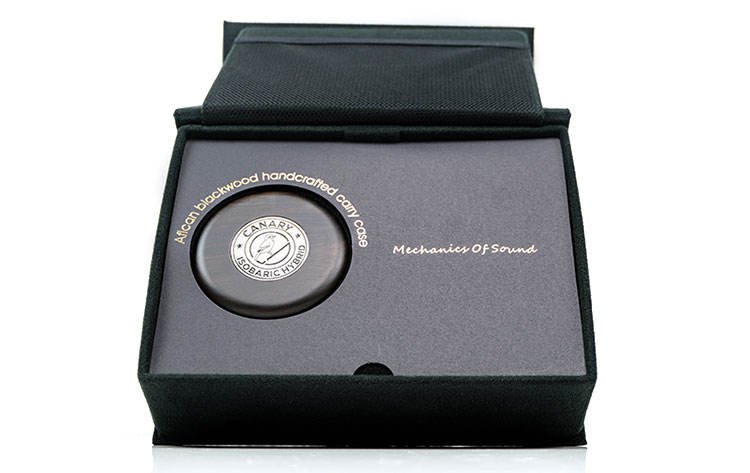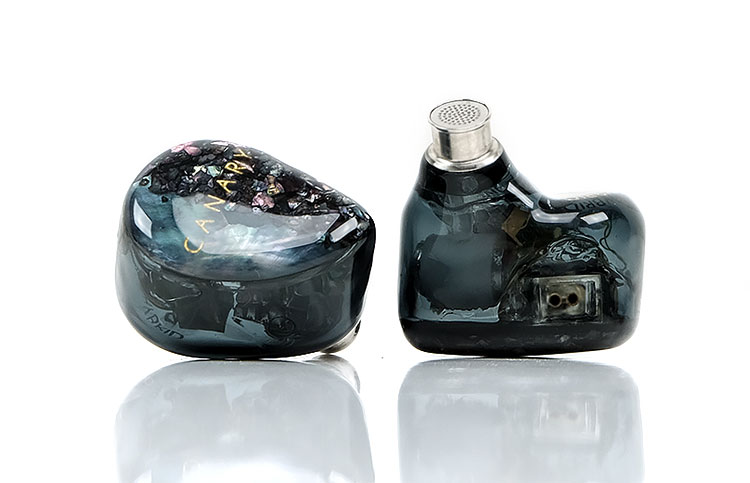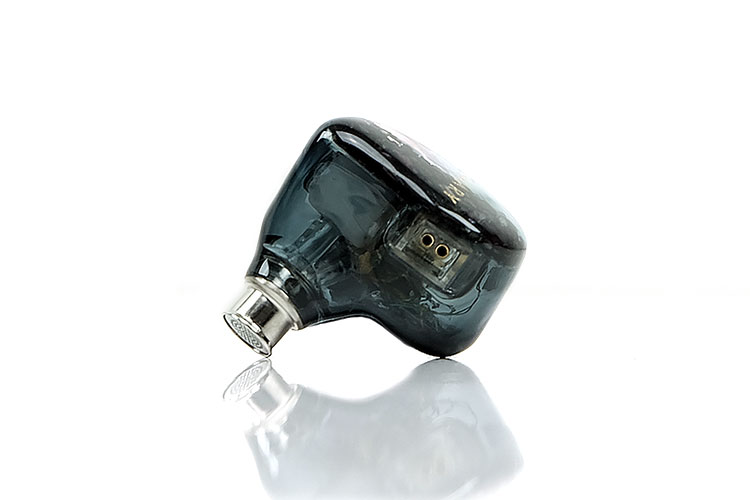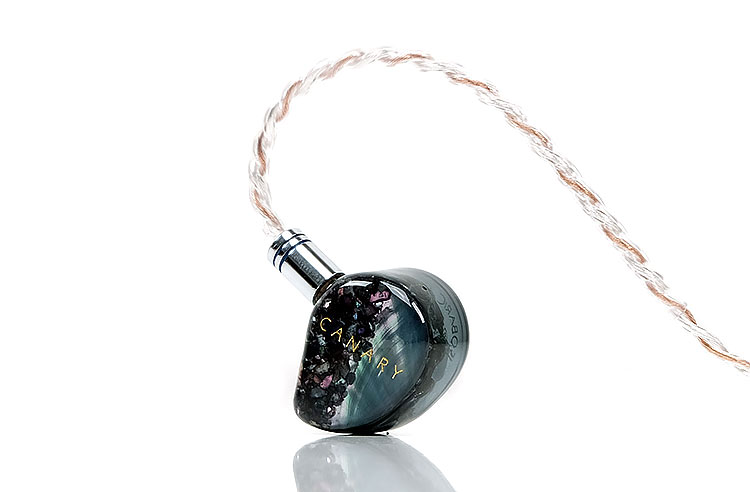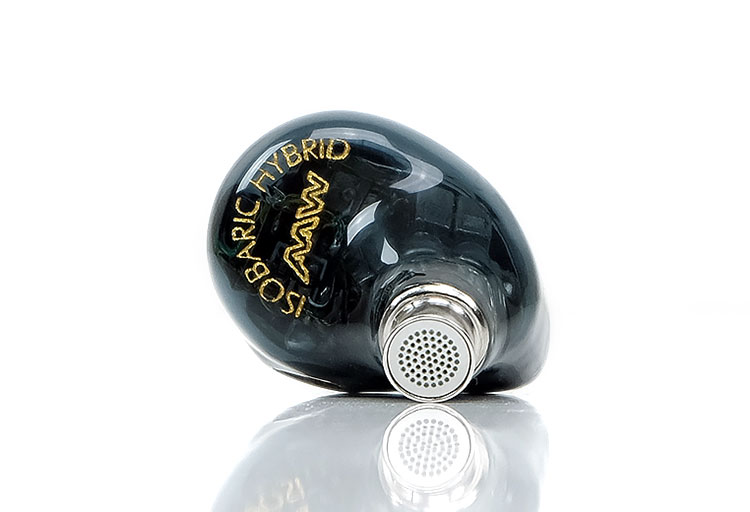The AAW Canary is the company’s debut flagship hybrid electrostatic universal monitor, (also can be ordered in custom format). It has a recommended retail price of SG$2,999.00.
Disclaimer: The AAW Canary sent to us is a sample in exchange for our honest opinion. We thank the teams at AAW for giving us this opportunity.
To read more about AAW (Advanced AcousticWerkes) products reviewed on Headfonics click here.
I first heard the Canary at CanJam Singapore. Given it was show conditions and the limited time I couldn’t really form a definitive opinion of how well they performed. Thankfully, Kevin and the team at AAW sent us over the universal version of their flagship monitor recently so we can get something in-depth on paper for you guys to read.
We are only into August 2019 and already this is the umpteenth ‘flagship’ hybrid monitor using electrostatic drivers. Thankfully, each one is very different in their tuning and it does offer a pleasant insight into how each company likes their products to sound.
The Canary is no different in that respect and even with our initial impressions, there is a clear tuning difference with competing e-stats monitors like the Khan, Elysium, Trinity and Soranik’s DES.
Tech Inside
The Canary is a hybrid universal driver monitor though you can get this in a custom design should you have a degree of patience and a penchant for individualism.
Like the name drops in the intro, the Canary is a fusion of 3 different types of drivers, dynamic, balanced armature, and electrostatic. There is a total of 7 drivers with a dual-diaphragm 6mm push-pull isobaric woofer (dynamic), 4 BA for the mids and highs and a dual electrostatic tweeter array for the super highs.
All of this is stitched together using a 4-way passive and acoustic crossover design which is based on their TrueXross system to reduce coherence and phase shift issues to a minimum in complex hybrid designs.
Unboxing
It seems like with every new AAW release the blue presentation case gets larger and larger. This has to be the largest version I have received to date. Is it impressive? Well, yes no issues there and that PU leather covered blue finish with Canary metal badge at the bottom does look fairly premium and fitting for a high-end offering.
Inside, its all about a clean visual so everything is neatly tucked away under a paper insert with just the small carry case for show. The new cases are indeed lovely and it seems AAW are rather proud of that with the statement “African blackwood handcrafted carry case” in gold emboss printed just above it on the paper tray.
One thing to note is the underside of the flip-top lid which has a little mesh netted flap that pulls down to reveal a small blue Pu Leather-finished pocket. Inside is a warranty card and a small code to allow you to register the Canary and get an additional 3 months warranty on the standard 12.
Accessories
Inside the universal edition retail box you get the following accessories:
- 48″ Symphonym Hakone UPOCC Silver/Copper Cable
- Wooden AAW Carrying Case
- Cleaning Cloth
- Flight & 1/4″ adapter
- Assorted Ear Tips
- 1 Year Limited Warranty card
The first two in particular offer excellent value and craftsmanship. I have seen the carry case before with the Nightingale First Contact done in June so it does seem to be a new theme with AAW to included these attractive little woody cases.
The quality of the handcrafting is really good also with not a blemish or chip to be seen anywhere. This is a very smooth dark wood finish. Inside you also get a layer of dense foam top, bottom and sides to protect the Canary drivers from any damage from knocks.
Design
The Canary in the pictures is the stock design and the same one you will see on all universal version currently. If you decide to go with a custom version you can change the design and personalize it with your own artwork.
This is a lightly smoked translucent acrylic body with a faceplate consisting of gold and silver flakes in a mosaic pattern on one half and a turquoise Pearloid finish on the other half. The overall visual is unique with a sort of semi-green/black overtone and a nice shimmer from the faceplate, especially when you flick it under the light. The design is finished with a light gold-colored Canary moniker on both faceplates.
The nozzle is not acrylic, however. On the universal, it is an additional component made of stainless steel and using a small perforated metal finish on the top.
Cables & Connectors
The Canary uses a slightly recessed socket 2-pin 0.78mm socket mounted on the top for over-the-ear wearing. I always find recessed just a little bit fiddly for wide barrel 2-pin cables but this one seems fine, even with other cables attached. The key is normally how accurate or central the pin socket is to the opening. Any angles or slight misalignment can be a nightmare. So far so good with the Canary socket.
Hakone Cable
The supplied stock cable is gorgeous and a real upgrade on the standard plastic one nonsense some stuff into their flagship offerings. The Null Audio Hakone cable is sold on its own for $299 so it is not a cheap cable by anyone’s standards.
This is a 1.2m 26AWG UPOCC Litz silver/copper wire (2 x 2 staggered multi-density wire) with a PVC translucent jacket and terminated with a rhodium-plated 2.5m TRRS jack and gold-plated brass pins on the connector side.
The barrels are solid chrome and carbon fiber printed aluminum alloy finished and do add a bit of solidity to the cable weight. The chin strap is a gorgeous little chrome-finished aluminum ring that matches the splitter barrel perfectly.
There is some memory wire finish but its more the springy type and fairly lightweight rather than a memory retentive version. It is a fairly thick finish though and I would love to see Null thin that out even more and make it less visible.
Otherwise, the Hakone cable is very easy to work with and very microphonic free below the splitter. The little bit of weight on the barrels does produce some welcome downwards pressure to keep it from bouncing around during use also.
In The Ear
This is the universal version but the fit and seal seems very good. I was looking for some sort of venting feature given the use of a dynamic driver but could not find one. I am guessing the 6mm size and push-ball isobaric technology renders one moot. If I find it I will report back to you but otherwise, this seals as good as a balanced armature ventless driver shell with excellent passive background noise isolation.
The Canary not quite a custom universal in shape, there are not so many aggressive curves in its design but it is rounded enough with a thickish nozzle to sit securely in my ear. Even with smallish silicone tips, I do not feel they are loose though they do stick out a little from my ear due to its fairly deep dimension.
Initial Sound Impressions
Power
First thing I noticed was turning up the juice on the Canary. Rated at 100dB SPL it will need a bit more current than non-electrostatic competitors such as the tia Trio and definitely less efficient than the CA Solaris. Mind you, this seems to be the trend for the first-generation electrostatic monitors with the majority of the current demand coming from those dual Sonion tweeters.
The 16Ω impedance is low though so it won’t sound flat or tinny with an excellent dynamic range from any decent powered DAP from the Sony 1Z, to the higher-powered Cayin N6ii and iBasso’s AMP1 MKII amp card. Cards such as the AMP 8 with the DX220 are particularly nice thus far with the Canary stock sound. I have a feeling the Canary can scale and I will be curious to hear it from some portable powerhouse amps.
Performance
What I can say right now is that the Canary performance does not come across as one big dynamic driver vs many small drivers. Its feel more coherent than that though I would not describe it as a pure reference sound as it has a few lifts here and there for something a little sweeter sounding over neutral.
The isobaric driver seems to be delivering the goods right down sub-5oHz with a mild elevation towards the mid-bass for some nuanced warmth which is where I suspect that sweetness to the timbre of the Canary comes about. The electrostatic tweeters are also tuned a little further forward than the Jomo Audio Trinity driver equivalent but not hugely so. The headroom and air are definitely there with the Canary but the treble has some welcome wetness that keeps it from sounding lean or peaky. This is an impressive treble tuning already.
I am already loving the vocal timbre on the Canary, particularly female vocals. Criss-crossing between a Chord Mojo and Cayin’s N6ii delivered the same impression of the Canary voicing. There is plenty of space for them to breathe with a little forwardness also that gives them a bit of focus without being shouty.
Stay Tuned!
I am already very impressed with the AAW Canary and it this one could well be in the running for the end of year accolades. I am always in favor of a strong slightly euphonic vocal delivery and good treble body. This one delivers already and it is just our initial impressions.
I am also impressed by the coherence that AAW has wrung out of this hybrid driver design. So often hybrids can overly rely on booming bass becoming one-trick ponies. AAW has resisted that style of tuning. The coloration is more for listening than reference but so far this is a very enjoyable listening experience.
What will make or break this flagship is just how well it stacks up with the current electrostatic flagships out there such as the Khan, Trinity, and Vision ear’s new Elysium. The competition is strong but then it should be. Stay Tuned!
Canary Specifications
- Frequency Range: 5-100,000 Hz
- Nominal Impedance: 12 ohms
- Sound Pressure Level: 100 dB


